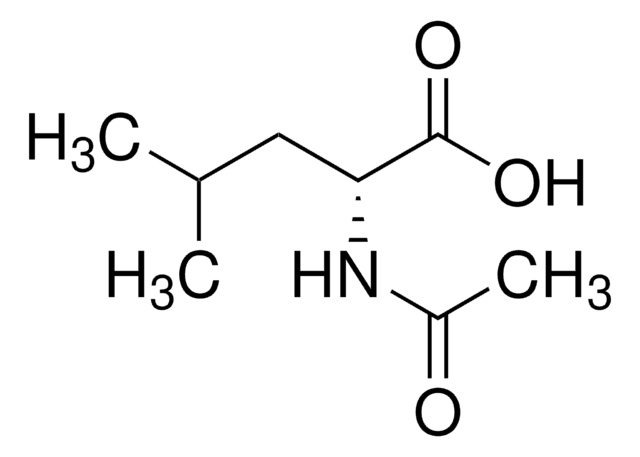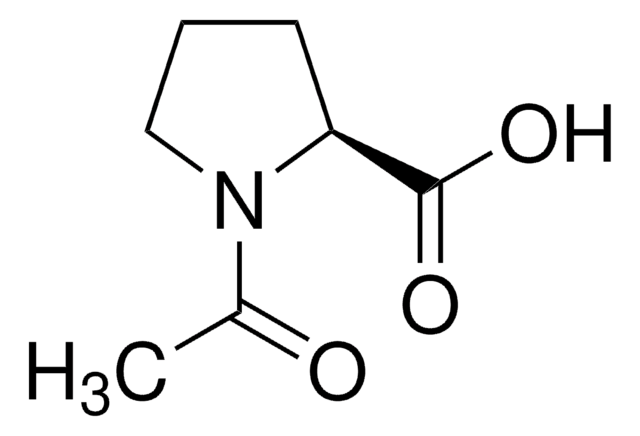This product may be stored at room temperature. The stability of this compound in solution has not been determined. However various external sources state that this product may be stored in aliquots at -80°C for 2 years and -20°C, for 1 year. This information has not been validated.
441511
N-Acetyl-L-leucine
99%, for peptide synthesis, ReagentPlus®
Sinónimos:
N-Acetyl-L-(-)-leucine, Acetylleucine
Seleccione un Tamaño
Seleccione un Tamaño
About This Item
Productos recomendados
Nombre del producto
N-Acetyl-L-leucine, ReagentPlus®, 99%
Línea del producto
ReagentPlus®
Ensayo
99%
Formulario
solid
actividad óptica
[α]25/D −23±3°, c = 2 in ethanol
idoneidad de la reacción
reaction type: C-H Activation
reaction type: solution phase peptide synthesis
reagent type: catalyst
reaction type: Peptide Synthesis
mp
187-190 °C (lit.)
aplicaciones
peptide synthesis
grupo funcional
amine
carboxylic acid
cadena SMILES
CC(C)C[C@H](NC(C)=O)C(O)=O
InChI
1S/C8H15NO3/c1-5(2)4-7(8(11)12)9-6(3)10/h5,7H,4H2,1-3H3,(H,9,10)(H,11,12)/t7-/m0/s1
Clave InChI
WXNXCEHXYPACJF-ZETCQYMHSA-N
¿Está buscando productos similares? Visita Guía de comparación de productos
Categorías relacionadas
Información legal
Código de clase de almacenamiento
11 - Combustible Solids
Clase de riesgo para el agua (WGK)
WGK 3
Punto de inflamabilidad (°F)
Not applicable
Punto de inflamabilidad (°C)
Not applicable
Elija entre una de las versiones más recientes:
¿Ya tiene este producto?
Encuentre la documentación para los productos que ha comprado recientemente en la Biblioteca de documentos.
Los clientes también vieron
-
Storage temperature? Storage temperature when already diluted?
1 answer-
Helpful?
-
Active Filters
Nuestro equipo de científicos tiene experiencia en todas las áreas de investigación: Ciencias de la vida, Ciencia de los materiales, Síntesis química, Cromatografía, Analítica y muchas otras.
Póngase en contacto con el Servicio técnico











